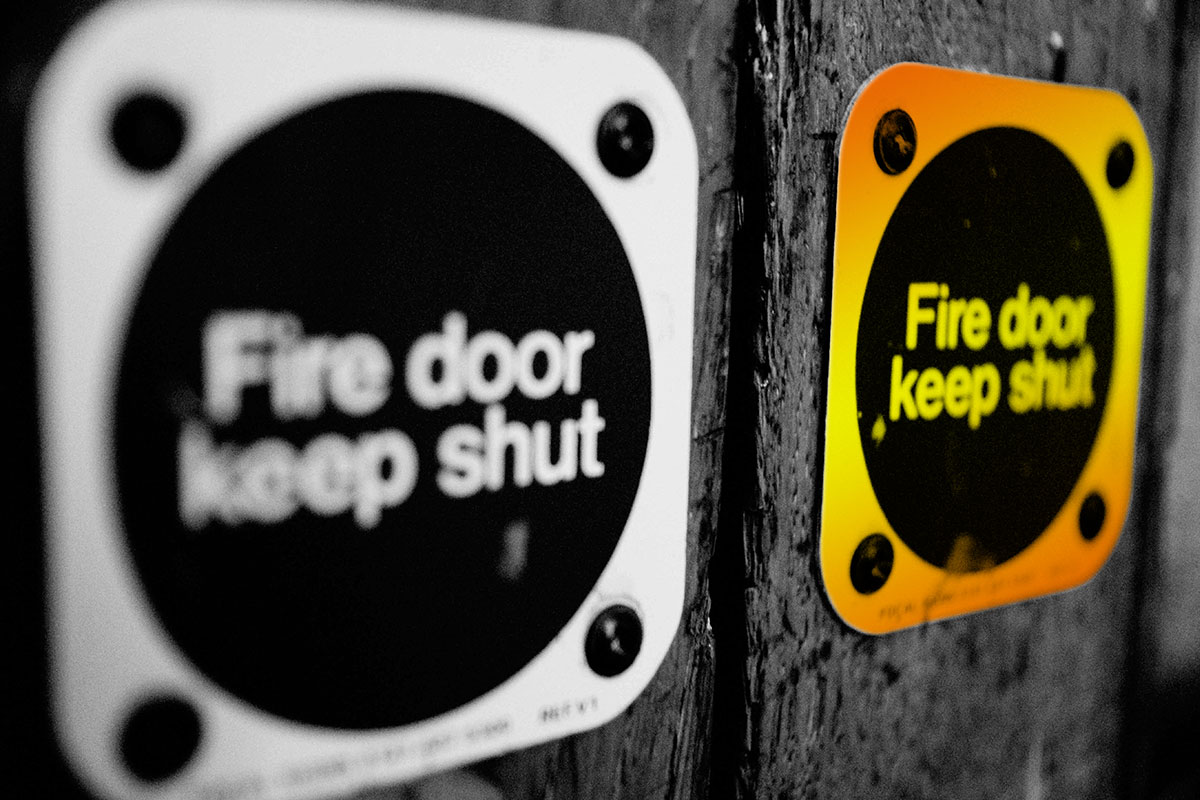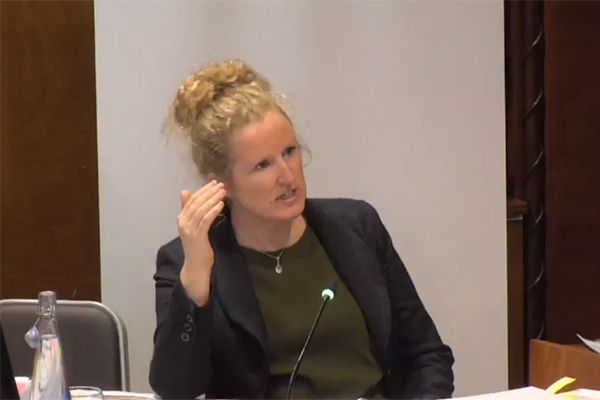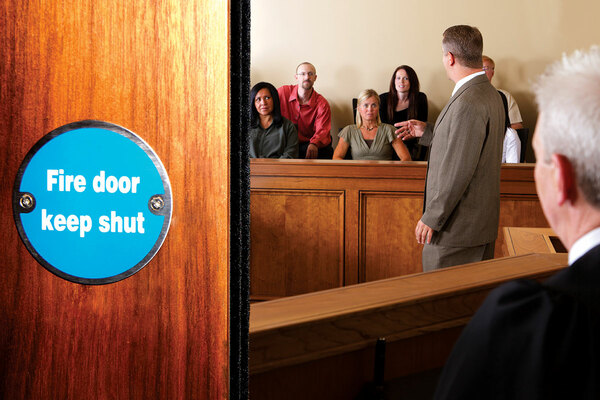Last risk assessment on Grenfell Tower warned fire doors were non-compliant
The last fire risk assessment on Grenfell Tower before the deadly blaze raised a series of concerns about safety – including a specific warning that the tower’s fire doors were not smoke sealed.
A risk assessment was carried out on 20 June 2016, a couple of months after the completion of the refurbishment in which deadly cladding was installed to the walls of the tower.
It raised 43 issues for ‘high-priority’ follow-up, recommending that Kensington and Chelsea Tenant Management Organisation (KCTMO) should take action to fix them within two to three weeks.
Although many of these related directly to the refurbishment, such as checking new wiring and removing waste from the basements, some serious issues were raised regarding the building’s fire doors.
In particular, the risk assessment noted an absence of ‘cold smoke seals’, which prevent smoke from leaking in through the edges of a fire door.
It said the council’s building control department had been made aware of the lack of smoke seals but had not demanded their installation.
“Some of the new doors in this building are not fitted with cold smoke seals as required by the building regulations. The building control officer has stated that smoke seals should not be fitted to these doors,” it said.
“If this is the case, the building control officer should be asked to put this in writing because if this building is audited by the [London Fire Brigade] under the Fire Safety Order them [sic] this document will be needed as evidence.”
The fire doors at Grenfell Tower were fitted in a replacement programme in 2011, separate to the main refurbishment carried out by Rydon, which fitted the cladding and new windows.
Dr Barbara Lane, an expert witness to the inquiry, raised the fact that the doors did not have a smoke seal rating in her evidence last year. The doors, Masterdor Suredors made by the defunct company Manse Masterdor, failed safety tests after the blaze. There were also widespread issues with broken self-closing devices.
But this risk assessment proves that KCTMO and the council were aware of issues with the doors before the fire.
One fire safety expert told Inside Housing: “It’s not good. Fire doors should all have smoke seals, that’s a simple requirement of the building regulations. As a housing manager, if you saw that in a risk assessment, you should treat it as a serious issue and sort it out.”
The assessment went on to raise issues with doors from the lobbies to the stairwells in the tower and said some of them “are not being closed fully by the self-closing devices fitted to the doors”. It said this should be picked up by the building’s caretaker.
Many residents trapped on the higher floors were unable to escape after the stairwell – the building’s only exit – filled with smoke during the fire. Four bodies were recovered inside the stairwell.
Arnold Tarling, a chartered surveyor and fire safety expert, said: “This is an issue that should have been dealt with immediately [after the risk assessment]. What is the point of a fire door that doesn’t close?”
The risk assessment also raised issues about the building’s automatic smoke ventilation system, saying there were no operating instructions and the key to manually operate it was missing.
In November 2016, five months after the risk assessment, KCTMO was served with a deficiency notice by the London Fire and Emergency Planning Authority for failing to rectify safety issues with the building, including the issue of doors to the stairs failing to close.
The risk assessment was carried out by Carl Stokes, a private risk assessor. As a type one assessment, the lowest required by law, it would not have checked the cladding or the building’s external façade.
A spokesperson for KCTMO said: “All issues relating to the events and decision-making processes leading up to the Grenfell tragedy will be addressed in the coming months of the phase two inquiry. Witnesses from the TMO will be co-operating fully with the inquiry to help it ascertain the full and relevant facts.”
A spokesperson for the Royal Borough of Kensington and Chelsea said: “The council will continue assisting the inquiry, as demonstrated in phase one, no matter what. We understand that the actions and decisions of those serving the council prior to 14 June 2017, and in the days after the tragedy, will be under intense scrutiny.
“That is right, and we welcome it. We hope all the organisations and companies giving evidence over the coming months accept it and help the inquiry get to the full unvarnished truth.”
Sign up for our daily newsletter
Already have an account? Click here to manage your newsletters














